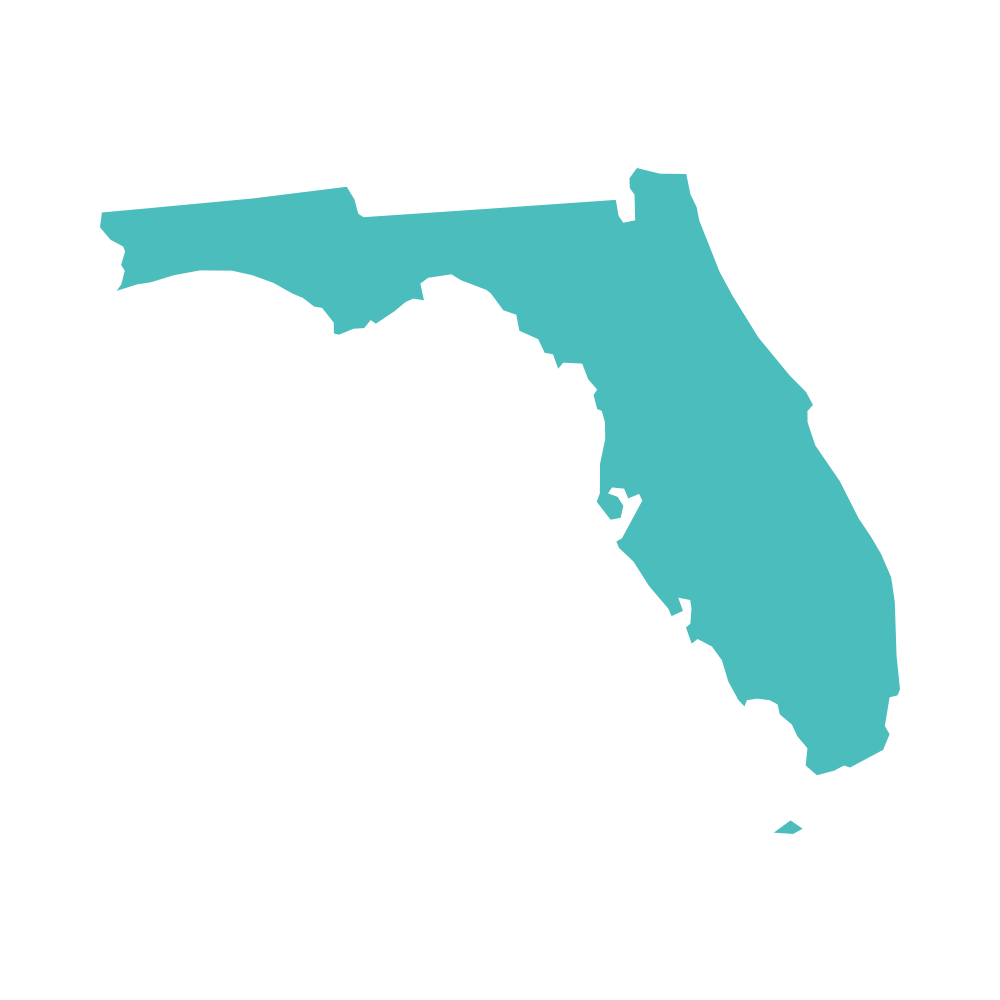Florida

Ranking Highlights
| 2020 Rank | Change from Baseline | |
|---|---|---|
| Overall Ranking | 41 | +2 |
| Access and Affordability | 48 | 0 |
| Prevention and Treatment | 33 | +11 |
| Avoidable Hospital Use and Cost | 47 | -2 |
| Healthy Lives | 27 | +1 |
| Disparity | 44 | -2 |
| Medicaid Expansion (as of Jan. 2018) | No |
Demographics
| Florida | Average | |
|---|---|---|
| Total Population | 20,999,451 | 322,324,172 |
| Median Household Income | $60,786 | $67,877 |
| Below 200% of Federal Poverty Level (FPL) | 33% | 30% |
| % White Race, Non-Hispanic | 53% | 60% |
| % Black Race, Non-Hispanic | 15% | 12% |
| % Other Race, Non-Hispanic | 5% | 9% |
| % Hispanic Ethnicity | 26% | 18% |
Loading Florida...
Highlights
Top Ranked Indicators
- Children who did not receive needed mental health care
- Home health patients without improved mobility
- Adults who smoke
Bottom Ranked Indicators
- Employee insurance costs as a share of median income
- Medicare spending per beneficiary
- Children without a medical home
Most Improved Indicators
- Nursing home residents with an antipsychotic medication
- Home health patients without improved mobility
- Central line-associated blood stream infection (CLABSI)
Indicators That Worsened the Most
- Adults who are obese
- Hospital 30-day mortality
- Preventable hospitalizations ages 18–64
Comparison with the U.S. Average
Loading data...
Estimated Gains Florida Could Expect if Performance Improves to Match Top States
| Top State in the U.S. | Top State in the Southeast region | Gains for Florida |
|---|---|---|
| 2,147,071 | 1,568,538 | more adults and children would be insured |
| 1,510,527 | 503,509 | fewer adults would skip needed care because of its cost |
| 694,653 | 198,472 | more adults would receive age- and gender-appropriate cancer screenings |
| 47,419 | 37,257 | more children (ages 19–35 months) would receive all recommended vaccines |
| 1,022,548 | 627,681 | fewer employer-insured adults and elderly Medicare beneficiaries would seek care in emergency departments for nonemergent or primary-care-treatable conditions |
| 5,365 | 386 | fewer premature deaths (before age 75) would occur from causes that are potentially treatable or preventable with timely and appropriate care |
Estimated impact if this state’s performance improved to the rate of two benchmark levels — a national benchmark set at the level of the best-performing state and a regional benchmark set at the level of the top-performing state in region (www.bea.gov: Great Lakes, Mid-Atlantic, New England, Plains, Rocky Mountains, Southeast, Southwest, West). Benchmark states have an estimated impact of zero (0).
Download this State Profile as a PDF
Want more? Check out our Data Center